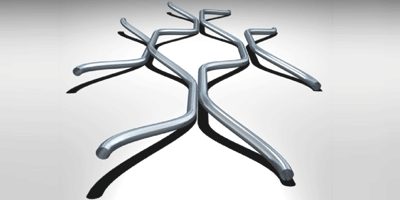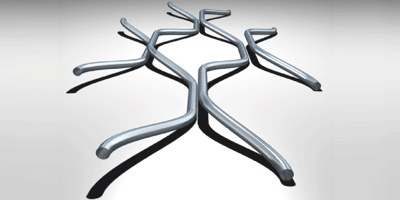Quantum Pairs Walking
Harnessing quantum information could allow powerful computations that are inaccessible to classical systems. But many quantum features of a single particle simply reflect its wavelike aspects. Experiments in Physical Review Letters simultaneously manipulate pairs of particles, whose interlinked behavior cannot be emulated by classical waves. Linda Sansoni of Sapienza University of Rome, Italy, and her colleagues implemented the quantum version of a discrete random walk using photons in a centimeter-sized glass chip. They first focused intense laser pulses along chosen paths, which tweak the glass’s refractive index to create stable waveguides for later photons. Running two parallel waveguides alongside each other for about two millimeters gives a photon a chance of jumping between them.
The team wrote an array of parallel waveguides that periodically came closer to their left or right neighbors. A photon launched into one waveguide could emerge in any of eight guides, depending on which jumps it made in the various interaction regions. But unlike the classical version of the random walk, the probabilities of different outcomes reflect the effects of quantum interference between different paths.
The researchers used beamsplitters to mimic both a “quantum coin” operation (whether a photon jumps) and the walker displacement. By launching pairs of photons whose polarization states were entangled, the researchers could reproduce all types of quantum interactions, from fermionlike repulsion to bosonlike attraction and anything in between. These results matched theoretical expectations, but the technique could be adapted to simulate other, less-well-understood quantum systems. – Don Monroe
Correction (6 January 2012): Paragraph 3, sentence 1, “The researchers used the vertical or horizontal polarization of the photons to encode a quantum degree of freedom, or “quantum coin,” which affects whether a photon jumps or not.” changed to “The researchers used beamsplitters to mimic both a “quantum coin” operation (whether a photon jumps) and the walker displacement.”





